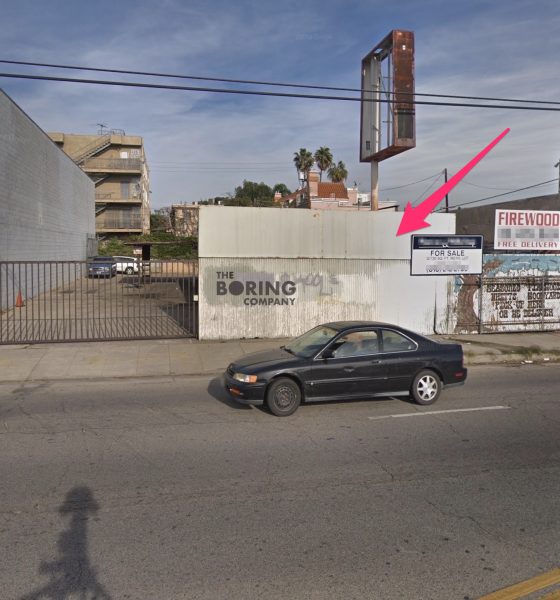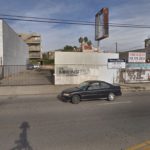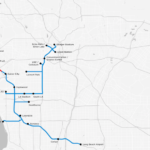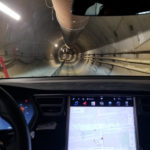

News
The Boring Co. secures land in major LA corridor for upcoming Loop station
The Boring Company has secured a parcel of land in West Los Angeles for a future Loop station along its first LA-route. As could be seen in recent sale records and filings with the office of the Secretary of State of the State of California, Elon Musk’s tunneling startup under the entity name “TBC – The Boring Company” secured a commercial-zoned property located at 2352-2356 S Sepulveda Boulevard in April of this year.
The property lies along the path of the Boring Company’s proposed 6.5-mile long proof-of-concept tunnel that would run from northeast Westchester to Brentwood, one of the most traffic-congested sections in the West Los Angeles area. The tunnel system, a section of which seems to be nearing completion based on recent social media teasers from The Boring Company, would run under Sepulveda Blvd. and right across Culver City.
The location of the land purchased by the company was initially tipped off to us by Robert of the Talking Tesla podcast, who posted a photo of the site as a response to a tweet from the tunneling startup. The location, which could be seen on Google Maps, appears to have been used previously as a wood storage area. The land itself was sold through Marcus & Millichap, a commercial real estate brokerage firm. Marcus & Millichap was offering the land for $4.7 million, and as public records show, on February 1, 2018, it was purchased for a price of $4.6 million.
- Note: “The Boring Company” logo added to the Google Maps Streetview for emphasis
- The Boring Company’s conceptual map for its planned Los Angeles tunnel system. [Credit: The Boring Company]
- A Tesla Model S inside a Boring Co. tunnel. [Credit: Elon Musk/Instagram]
Note: “The Boring Company” logo added to the Google Maps Streetview for emphasis
The Sepulveda Blvd. lots were purchased by Jadejams Property LLC, which was newly incorporated in January 2018. On February 1, Jadejams purchased the land from Marcus & Millichap. Filings submitted to the office of the Secretary of State of the State of CA reveal that Jadejams Property LLC is listed with a business address of 12200 Crenshaw Blvd., which is the street adjacent to SpaceX’s headquarters and right above the Boring Company’s test tunnel. Furthermore, Jadejams Property LLC’s filings also list The Boring Company as its sole manager. Jared Birchall, who is linked to Elon Musk through Neuralink, is listed as the person who completed Jadejams Property LLC’s filing.
The Boring Company’s Loop stations are designed to be small loading zones and exits where passengers could use for access to the company’s underground tunnel system. Passengers in the Loop system would be carried from one destination to another in an electric-powered pod, which would be manufactured by Tesla and be capable of transporting up to 16 passengers at a time. The Loop system will not use vacuum sealed tunnels and hence, will not support hyperloop transport. Nevertheless, the pods in the Loop would still be able to reach speeds of up to 150 mph, thanks to an eight-wheel design that would be fitted on the sides of the vehicle. The Loop system is set to be used by the Boring Company in the Chicago-O’Hare high-speed transport system, which is set to begin in the near future.
According to Elon Musk, The Boring Company would be offering free demo rides on the Hawthorne test tunnel soon. If the company’s recent social media uploads from the tunneling startup are any indication, test rides in the test tunnel would be both an exhilarating and colorful experience for passengers.

Elon Musk
Elon Musk and Tesla AI Director share insights after empty driver seat Robotaxi rides
The executives’ unoccupied tests hint at the rapid progress of Tesla’s unsupervised Robotaxi efforts.

Tesla CEO Elon Musk and AI Director Ashok Elluswamy celebrated Christmas Eve by sharing personal experiences with Robotaxi vehicles that had no safety monitor or occupant in the driver’s seat. Musk described the system’s “perfect driving” around Austin, while Elluswamy posted video from the back seat, calling it “an amazing experience.”
The executives’ unoccupied tests hint at the rapid progress of Tesla’s unsupervised Robotaxi efforts.
Elon and Ashok’s firsthand Robotaxi insights
Prior to Musk and the Tesla AI Director’s posts, sightings of unmanned Teslas navigating public roads were widely shared on social media. One such vehicle was spotted in Austin, Texas, which Elon Musk acknowleged by stating that “Testing is underway with no occupants in the car.”
Based on his Christmas Eve post, Musk seemed to have tested an unmanned Tesla himself. “A Tesla with no safety monitor in the car and me sitting in the passenger seat took me all around Austin on Sunday with perfect driving,” Musk wrote in his post.
Elluswamy responded with a 2-minute video showing himself in the rear of an unmanned Tesla. The video featured the vehicle’s empty front seats, as well as its smooth handling through real-world traffic. He captioned his video with the words, “It’s an amazing experience!”
Towards Unsupervised operations
During an xAI Hackathon earlier this month, Elon Musk mentioned that Tesla owed be removing Safety Monitors from its Robotaxis in Austin in just three weeks. “Unsupervised is pretty much solved at this point. So there will be Tesla Robotaxis operating in Austin with no one in them. Not even anyone in the passenger seat in about three weeks,” he said. Musk echoed similar estimates at the 2025 Annual Shareholder Meeting and the Q3 2025 earnings call.
Considering the insights that were posted Musk and Elluswamy, it does appear that Tesla is working hard towards operating its Robotaxis with no safety monitors. This is quite impressive considering that the service was launched just earlier this year.
Elon Musk
Starlink passes 9 million active customers just weeks after hitting 8 million
The milestone highlights the accelerating growth of Starlink, which has now been adding over 20,000 new users per day.

SpaceX’s Starlink satellite internet service has continued its rapid global expansion, surpassing 9 million active customers just weeks after crossing the 8 million mark.
The milestone highlights the accelerating growth of Starlink, which has now been adding over 20,000 new users per day.
9 million customers
In a post on X, SpaceX stated that Starlink now serves over 9 million active users across 155 countries, territories, and markets. The company reached 8 million customers in early November, meaning it added roughly 1 million subscribers in under seven weeks, or about 21,275 new users on average per day.
“Starlink is connecting more than 9M active customers with high-speed internet across 155 countries, territories, and many other markets,” Starlink wrote in a post on its official X account. SpaceX President Gwynne Shotwell also celebrated the milestone on X. “A huge thank you to all of our customers and congrats to the Starlink team for such an incredible product,” she wrote.
That growth rate reflects both rising demand for broadband in underserved regions and Starlink’s expanding satellite constellation, which now includes more than 9,000 low-Earth-orbit satellites designed to deliver high-speed, low-latency internet worldwide.
Starlink’s momentum
Starlink’s momentum has been building up. SpaceX reported 4.6 million Starlink customers in December 2024, followed by 7 million by August 2025, and 8 million customers in November. Independent data also suggests Starlink usage is rising sharply, with Cloudflare reporting that global web traffic from Starlink users more than doubled in 2025, as noted in an Insider report.
Starlink’s momentum is increasingly tied to SpaceX’s broader financial outlook. Elon Musk has said the satellite network is “by far” the company’s largest revenue driver, and reports suggest SpaceX may be positioning itself for an initial public offering as soon as next year, with valuations estimated as high as $1.5 trillion. Musk has also suggested in the past that Starlink could have its own IPO in the future.
News
NVIDIA Director of Robotics: Tesla FSD v14 is the first AI to pass the “Physical Turing Test”
After testing FSD v14, Fan stated that his experience with FSD felt magical at first, but it soon started to feel like a routine.

NVIDIA Director of Robotics Jim Fan has praised Tesla’s Full Self-Driving (Supervised) v14 as the first AI to pass what he described as a “Physical Turing Test.”
After testing FSD v14, Fan stated that his experience with FSD felt magical at first, but it soon started to feel like a routine. And just like smartphones today, removing it now would “actively hurt.”
Jim Fan’s hands-on FSD v14 impressions
Fan, a leading researcher in embodied AI who is currently solving Physical AI at NVIDIA and spearheading the company’s Project GR00T initiative, noted that he actually was late to the Tesla game. He was, however, one of the first to try out FSD v14.
“I was very late to own a Tesla but among the earliest to try out FSD v14. It’s perhaps the first time I experience an AI that passes the Physical Turing Test: after a long day at work, you press a button, lay back, and couldn’t tell if a neural net or a human drove you home,” Fan wrote in a post on X.
Fan added: “Despite knowing exactly how robot learning works, I still find it magical watching the steering wheel turn by itself. First it feels surreal, next it becomes routine. Then, like the smartphone, taking it away actively hurts. This is how humanity gets rewired and glued to god-like technologies.”
The Physical Turing Test
The original Turing Test was conceived by Alan Turing in 1950, and it was aimed at determining if a machine could exhibit behavior that is equivalent to or indistinguishable from a human. By focusing on text-based conversations, the original Turing Test set a high bar for natural language processing and machine learning.
This test has been passed by today’s large language models. However, the capability to converse in a humanlike manner is a completely different challenge from performing real-world problem-solving or physical interactions. Thus, Fan introduced the Physical Turing Test, which challenges AI systems to demonstrate intelligence through physical actions.
Based on Fan’s comments, Tesla has demonstrated these intelligent physical actions with FSD v14. Elon Musk agreed with the NVIDIA executive, stating in a post on X that with FSD v14, “you can sense the sentience maturing.” Musk also praised Tesla AI, calling it the best “real-world AI” today.











